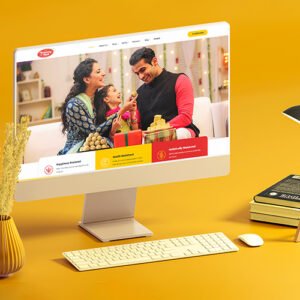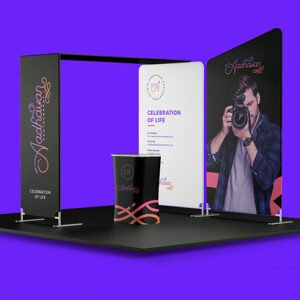Empower Your Brand: How Graphic Design Knowledge Can Transform Your Business
Graphic design knowledge can indeed have a transformative impact on your business. Here are some ways graphic design can empower your brand:
Strong Brand Identity:
Graphic design plays a crucial role in establishing a strong brand identity. Design elements such as logos, color palettes, typography, and visual style contribute to creating a recognizable and memorable brand. A well-designed brand identity communicates your values, personality, and differentiation, helping you stand out in a competitive market.
Visual Communication:
Graphic design enables effective visual communication. It allows you to communicate complex ideas, messages, and information in a visually appealing and accessible manner. Whether through infographics, illustrations, or typography, visual communication captures attention, enhances comprehension, and leaves a lasting impression on your audience.
Consistent Branding Across Channels:
Graphic design ensures consistent branding across various marketing channels. From your website and social media profiles to printed materials and packaging, a cohesive and consistent visual language reinforces your brand identity and builds trust and recognition. Consistent branding enhances brand recall and fosters a sense of professionalism and reliability.
Enhanced User Experience:
Good graphic design enhances the user experience across different touchpoints. An intuitive and visually pleasing website, user-friendly interfaces, and well-designed marketing materials make it easier for customers to engage with your brand. A positive user experience strengthens customer satisfaction, loyalty, and the likelihood of repeat business.
Effective Marketing Collateral:
Graphic design elevates your marketing collateral, making it more impactful and persuasive. Whether it’s designing eye-catching brochures, attention-grabbing social media graphics, or visually appealing advertisements, well-executed designs attract attention and compel action. Effective marketing collateral helps you communicate your value proposition and drive customer engagement.
Increased Brand Perception:
Thoughtfully designed visuals contribute to a positive brand perception. When your brand looks professional, modern, and visually appealing, it instills confidence in potential customers. A strong visual identity communicates that you care about quality, attention to detail, and delivering a superior product or service..
Competitive Advantage:
By investing in graphic design, you gain a competitive advantage. In a crowded marketplace, a well-designed brand stands out and captures attention. Effective graphic design differentiates you from competitors, helps you communicate your unique selling points, and positions your brand as the preferred choice in the minds of your target audience.
Storytelling and Emotional Connection:
Graphic design has the power to tell compelling stories and create emotional connections with your audience. Through visuals, you can evoke emotions, convey narratives, and create a deeper connection with customers. By using design elements strategically, you can communicate the essence of your brand, build trust, and foster long-term relationships.
Adaptability and Agility:
With graphic design knowledge, you gain the ability to adapt and respond quickly to changing market dynamics. You can update your visual assets, adapt designs for different channels, and stay relevant in a rapidly evolving digital landscape. Design skills empower you to maintain a fresh and contemporary brand image.
By leveraging graphic design knowledge, you can transform your business by establishing a strong brand identity, effectively communicating your message, creating engaging experiences, and gaining a competitive edge. Embracing graphic design as a strategic tool empowers your brand to connect with customers, drive growth, and achieve long-term success.








